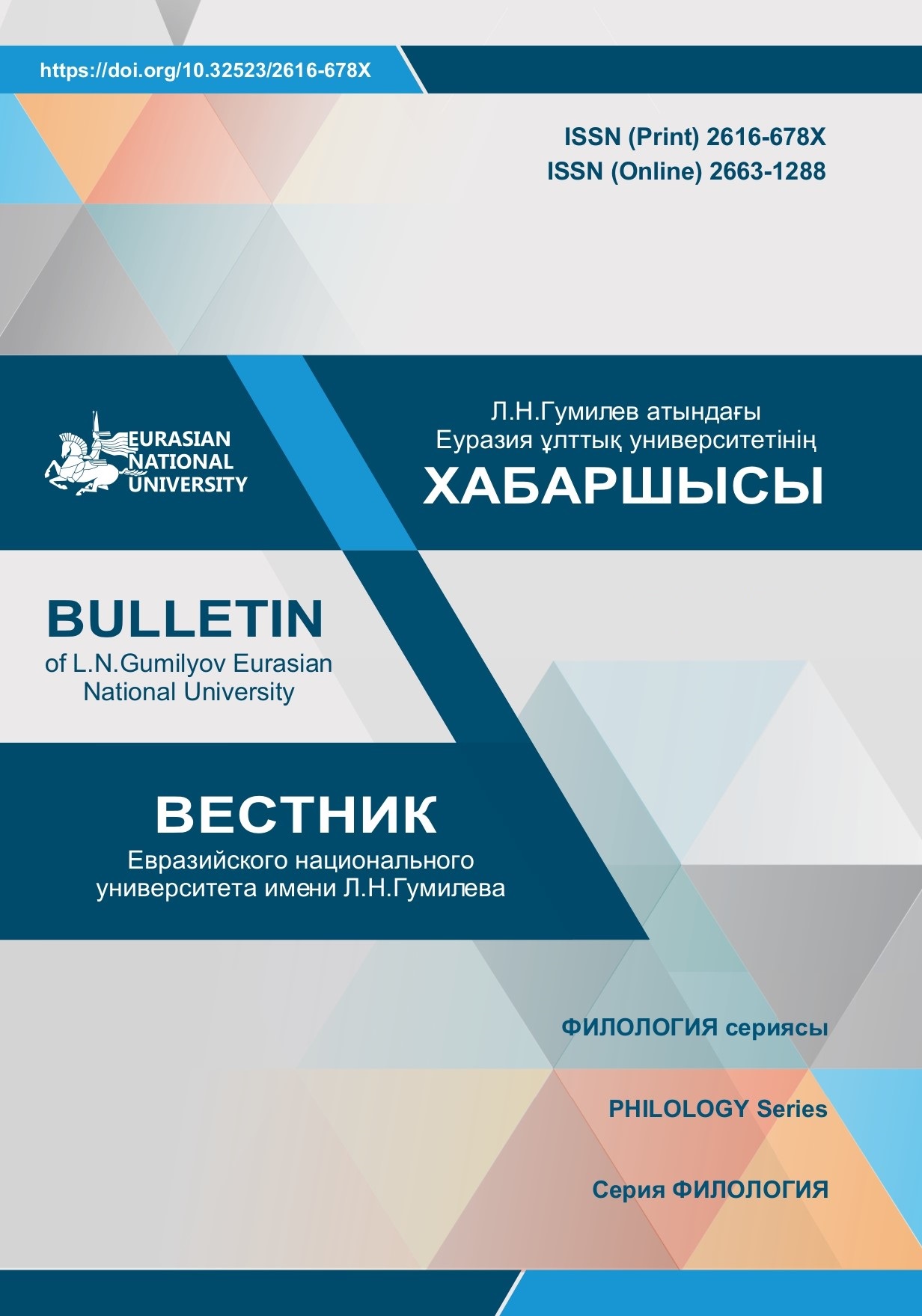The concept of period in the Kazakh syntax
Views: 191 / PDF downloads: 123
DOI:
https://doi.org/10.32523/2616-678X-2025-151-2-23-36Keywords:
period, stylistic figure, parallelism, protasis, apodasis, syntactic structure.Abstract
The study of the syntactic phenomenon in Kazakh linguistics dates back to the works of A. Baitursynuly and N. Sauranbayev. However, despite its historical roots, the concept remains underexplored and has not been fully established within modern linguistic studies. This article provides a comprehensive analysis of the period, identifying its structural and functional features in various linguistic contexts. The research examines the period’s presence in different discourse styles, including artistic, journalistic, and official communication, demonstrating its critical role in structuring complex sentences. Specific examples illustrate how the period enhances textual coherence and rhetorical expressiveness. The syntactic composition of the period is explored, highlighting its stacked, counted, and contiguous elements, as well as the inclusion of a summarizing or generalizing segment. The study incorporates the contributions by Zh. Zhakupov, who expanded the classification of the period in Kazakh linguistics, refining its syntactic and stylistic roles. The research also compares similar structures in other linguistic traditions, drawing on the works of R.Jakobson, N.S. Valgina, M. Lomonosov, A.B. Shapiro, E.Sapir, and N.Chomsky to contextualize the period’s relevance in broader linguistic theory. By providing a detailed structural and syntactic analysis, this study contributes to a more profound understanding of periodic structures in Kazakh and their role in linguistic organization.







